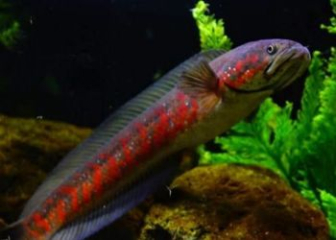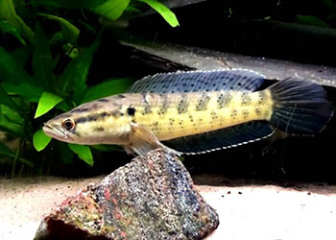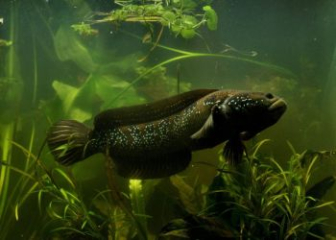Channa nachi snakehead fish, a new snakehead fish species discovered in early 2025 in India, has an impressive appearance with beautiful colors and interesting habits. Learn more here.
Channa nachi is a brand new species of fish in the Channidae family, discovered in early 2025 in India. They have an extremely beautiful appearance with an impressive body color transition from cream, light brown to metallic blue, quite aggressive temperament, highly territorial, promising to soon become a famous ornamental snakehead fish in the aquatic world.
In today's article, let's learn more about the origin, appearance and habits of Channa nachi snakehead fish!
Information about snakehead fish Channa nachi :
| Scientific name |
Channa nachi |
| Surname |
Channidae |
| Source |
India |
| Size |
18 - 22 cm |
| Behavior |
Quite aggressive, territorial when mature |
Origin of snakehead fish Channa nachi

Channa nachi is a new species of snakehead fish discovered in 2025.
Channa nachi is a new species of snakehead fish discovered around early 2025 in the northeastern Indian state of Meghalaya. The name "nachi" is not Latin but Garo - the native language of the Garo people in the area where this fish was discovered.
The location where this fish was discovered is a shallow, slow-flowing stream near Chokpot village, South Garo Hills. In nature, they prefer streams with a bottom of sand, rotten leaves or gravel, and clear water.
Appearance of snakehead fish Channa nachi
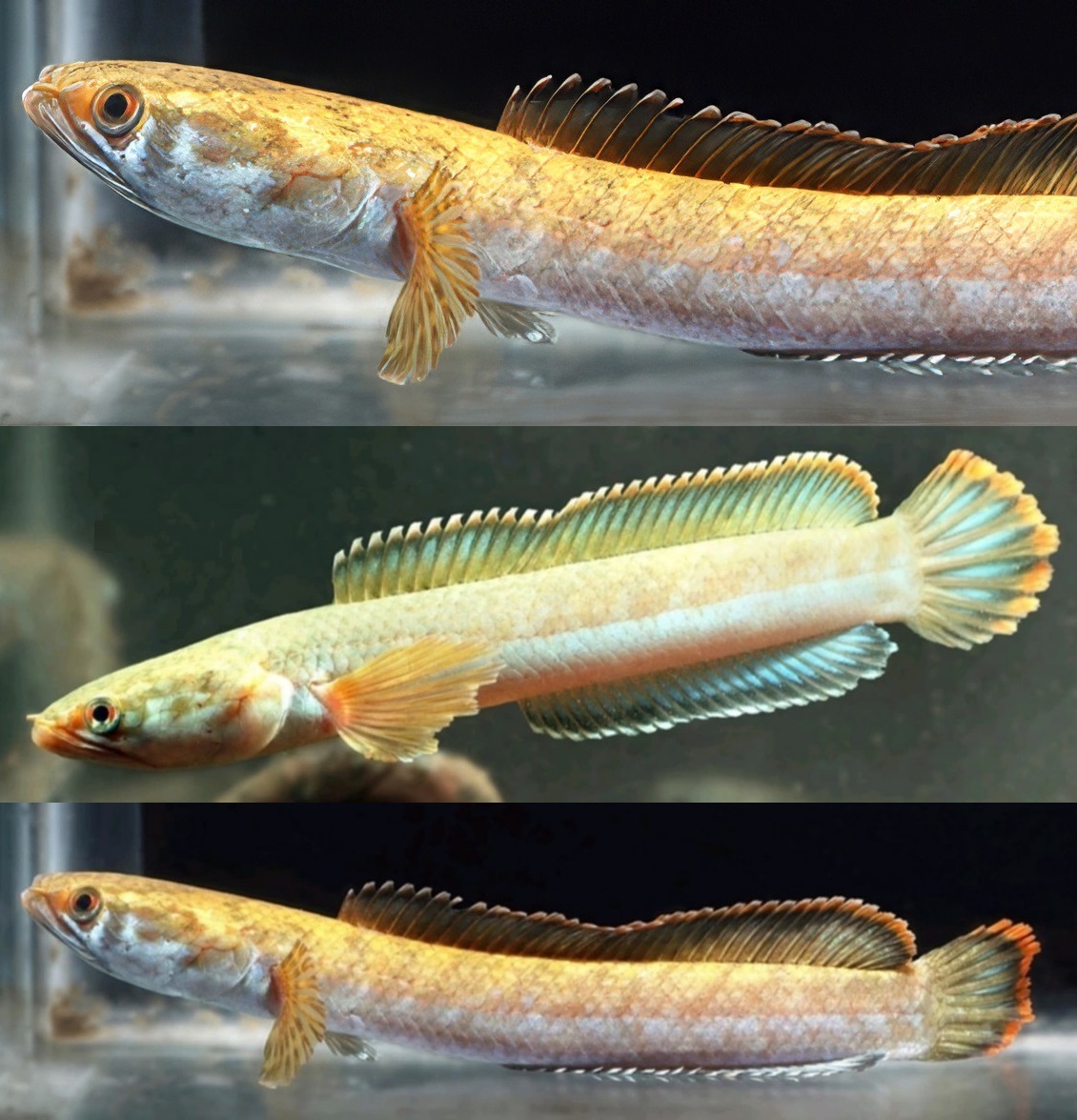
Detailed appearance of a Channa nachi snakehead fish.
Below are details about the physical characteristics of the Channa nachi fish. Please learn more to see if this newly discovered fish species is beautiful and eye-catching.
- Size : Average about 18 - 22 cm in adults, belongs to the group of medium snakehead fish.
- Body shape : Slender, long, cylindrical, laterally compressed, typical shape of the family Channidae
- Head : Flat, wide mouth, protruding lower jaw, sharp, pointed teeth.
- Eyes : Quite large, slanted upwards.
- Color : The head and front half of the fish are light cream or light brown, the back half of the body turns metallic blue, on the body there are about 10 - 12 light brown or red stripes running diagonally from the back to the belly, looking like a "saddle", this is also the most characteristic feature of this fish species.
- Dorsal & anal fins : Run along the body, dark blue or gray, with faint black and orange edges.
- Caudal fin : Quite round, metallic blue, edged with black and orange.
- Pectoral fins : Transparent, with 2 - 3 orange, light brown stripes.
Channa nachi snakehead fish behavior
To help you better understand this new snakehead fish species, we have shared details about the habits and behavior of Channa nachi. Please join us to learn more.
Living habits
As shared above, Channa nachi only likes to live in shallow streams with slow-flowing water, with a bottom of sand, rocks, leaves, gravel, rich in organic matter, and a neutral to slightly acidic pH. They love to hide under layers of rotten leaves, tree roots or rock caves, and like shade and still water.
They do not like places with too much light, this can easily cause stress and make this fish shy.
hunting behavior
Like other fish in the snakehead family, Channa nachi is a predatory, carnivorous fish. They hunt by stalking, waiting, and then quickly attacking, rather than swimming to find prey. Because it is used to eating fresh food in the wild, if you want to train it to eat pellets, it will take time.
Reproductive behavior
There are not many documents or studies on the reproduction of Channa nachi fish in nature or artificial environment, however, based on fish species closely related to nachi such as Channa bleheri, Channa andrao, they have the ability to reproduce by holding eggs and feeding their young by mouth. The breeding season will probably also take place in the rainy season, when water levels and temperatures change.
Temperament and Territory
According to many studies, Channa nachi is quite shy when young, but when it reaches adulthood, it will change 180 degrees, becoming aggressive and highly territorial. If kept in a tank that is not large enough, they can fight each other for hiding places.
Therefore, this fish is not suitable for keeping in public aquariums, it can only be kept in pairs if they have been paired and familiarized with each other before.
Has accessory respiratory organs
As a fish belonging to the snakehead family, Channa nachi also has an accessory respiratory organ, helping them breathe oxygen in the air and survive well in stagnant, turbid water with little oxygen.
Detailed instructions for caring for Channa nachi fish from A to Z
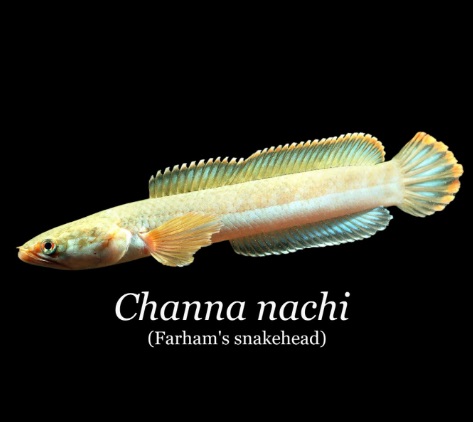
Channa nachi prefers dark, shady water environments.
Channa nachi is a new and quite rare snakehead fish species, so not many people know how to care for and raise them properly to help the fish grow best. Therefore, here we have given super detailed instructions on how to raise fish, you can learn more.
Prepare suitable pond
The most important thing in raising Channa nachi fish is that you need to prepare a suitable tank so that the fish can adapt quickly and grow well. Below are some basic requirements of the fish tank:
- Volume : Minimum 90 - 120 liters for 1 adult fish, ideal 150 - 200 liters if raising in pairs.
- Size : Length is many times larger than width so fish can swim comfortably.
- Tank bottom : Lots of fine sand, sprinkle with dry almond leaves to create a natural environment, stabilize pH.
- Decoration : Use driftwood, rocks, tree stumps or ceramic or plastic tubes to create shelter for fish.
- Aquatic plants : Should grow many aquatic plants such as moss, Java fern or plants that can tolerate low light conditions.
- Filter system : Choose a filter with moderate capacity, creating a gentle flow, should use an external filter or waterfall filter
- Tank cover : A tank cover is needed to prevent fish from jumping out of the tank.
Optimal water parameters
After designing a suitable aquarium, you need to prepare an ideal water environment, which has many similarities with the natural habitat of this fish species. Pay attention to the following parameters:
- Temperature : 24 - 27 degrees Celsius
- pH : 6.0 - 7.0
- Hardness : 3 - 8 dGH
- Water change : Change about 30% of the water every week, do not change all at once to avoid stressing the fish.
A varied and nutritious diet
Once you have an optimal living environment, you need to provide your fish with a varied, nutritious diet. Some common foods are as follows:
- Live food : Shrimp, earthworms, bloodworms, crickets, superworms
- Frozen food : Frozen fish, shrimp, prawn
- Pellets : Choose sinking pellets specifically for predatory fish.
Note :
- Fish under 10 cm: Feed 2 meals/day
- Adult fish: Eat 1 meal/day
- Feed fish : The right amount of food, avoid excess.
Fish behavior and polyculture
As shared above, Channa nachi will have an aggressive temperament when fully grown, so you need to pay attention to the following if you want to breed them together:
- Should not be kept with small, docile, slow fish to avoid becoming prey for Channa nachi.
- If you want to raise them in pairs, you need to raise them from a young age to avoid conflicts.
- Can be kept with some fish of similar size, fast swimming like bream, large rat fish, snakehead fish Channa bleheri,...
Prevention and treatment of diseases for Channa nachi fish
To help Channa nachi fish stay healthy, have fewer minor illnesses and live longer, you should pay attention to disease prevention and treatment for them. Specifically as follows:
Effective disease prevention for Channa nachi fish :
- Maintain a stable living environment, avoid sudden changes in temperature and pH.
- Provide appropriate nutrition
- Limit stress on fish such as strong light, tanks without hiding places,...
- Quarantine new fish for 1 - 2 weeks before releasing them into the tank.
- Observe fish behavior daily to detect abnormalities early.
Common diseases in Channa nachi fish :
| Common diseases |
Symptom |
How to handle and treat |
| Fish mushroom |
Fish have white patches like cotton wool on fins, gills, scales,...
Fish stop eating, lethargic
|
Isolate sick fish
Slightly increase the temperature by 2 - 3 degrees Celsius for 2 - 3 days to kill parasites.
Bathe fish with diluted salt water combined with methylene blue
|
| Endoparasites |
Fish stop eating, tired, not agile
Fish have white, long, slimy stools.
|
Mix Metronidazole into fish food and feed continuously for 1 week.
Change water, clean tank
|
| Fish with bloating |
Abnormally swollen fish belly
Fish are lethargic, swimming with their heads up.
|
Stop feeding fish for 2 - 3 days
Feed the fish with minced garlic and add more Indian almond leaves to the water.
Increase the temperature by 1 - 2 degrees Celsius to stimulate the fish's digestive system.
|
| Fish infected with skin parasites |
Fish are itchy, often rubbing themselves against rocks, driftwood, and the sides of the tank.
Fish are tired, lethargic, and swim jerkily.
|
Bathe fish with diluted Formalin salt
If you see parasites on your skin, use tweezers or forceps to remove them.
Change water, vacuum bottom, clean tank
|
Channa nachi snakehead fish price
Currently, there is no specific information about the selling price of Channa nachi fish because this is only a new species of snakehead fish discovered in early 2025, so it is not widely traded in the aquarium market. However, we believe that with their beauty and rarity, the price of Channa nachi fish will have to be up to several million VND.
If you are interested in raising and collecting this fish, you can follow aquarium stores that specialize in selling imported fish or rare snakehead fish to have the earliest chance to own it.
Thus, through the article on snakehead.info, we have shared information related to Channa nachi snakehead fish including its origin, habits and care instructions. This is indeed a special and rare breed of ornamental snakehead fish, very worthy of collection for professional ornamental fish players.
If you want to know more about other beautiful and rare snakehead fish species, don't miss the articles shared in our Blog section!






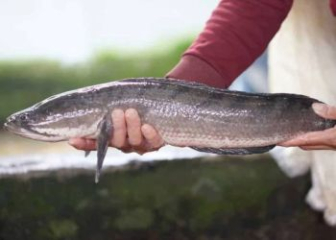
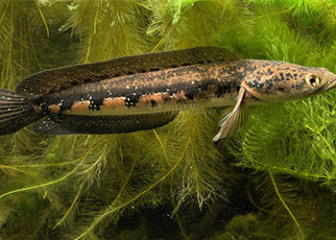

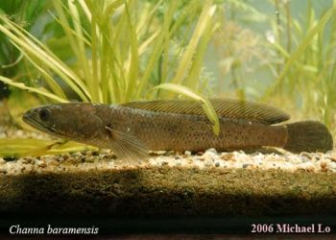
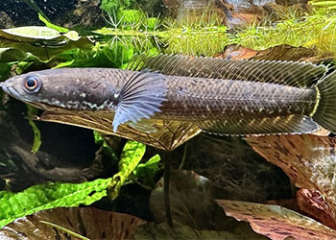
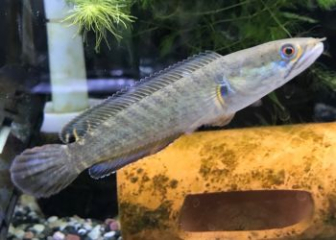
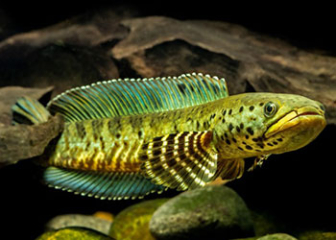
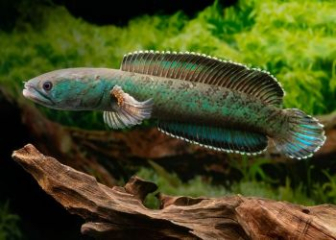

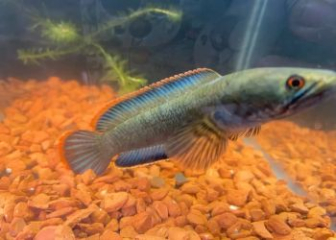
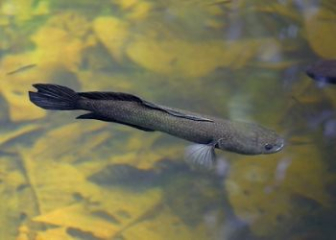
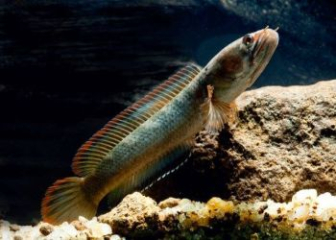
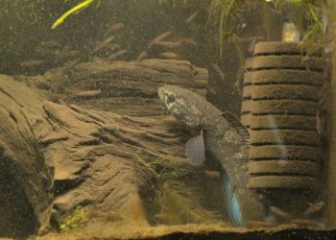
_350x250.jpg)
